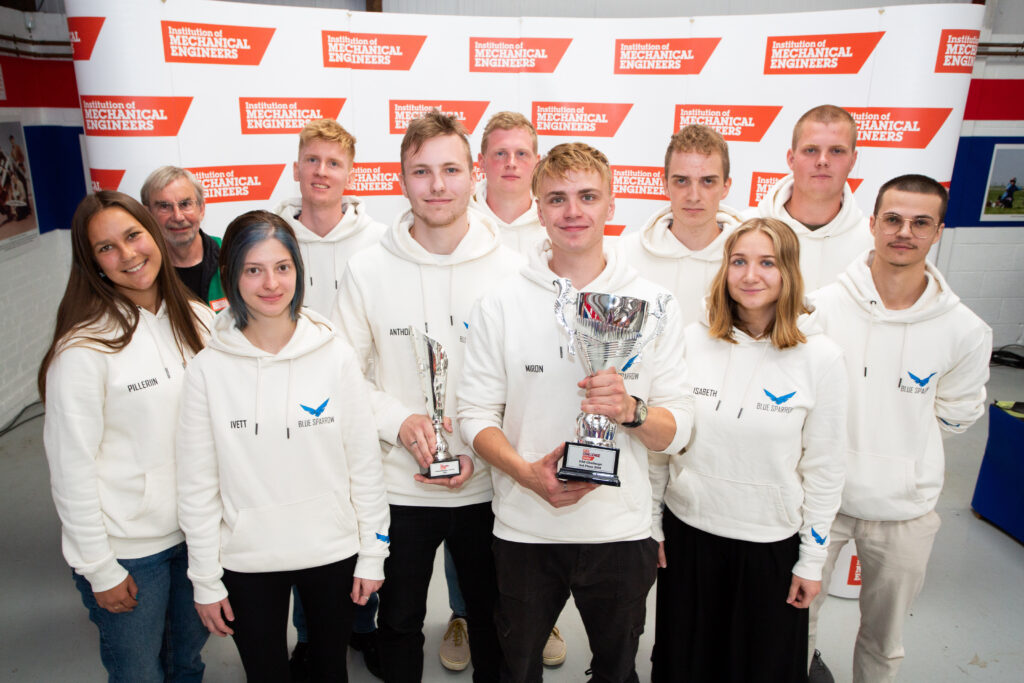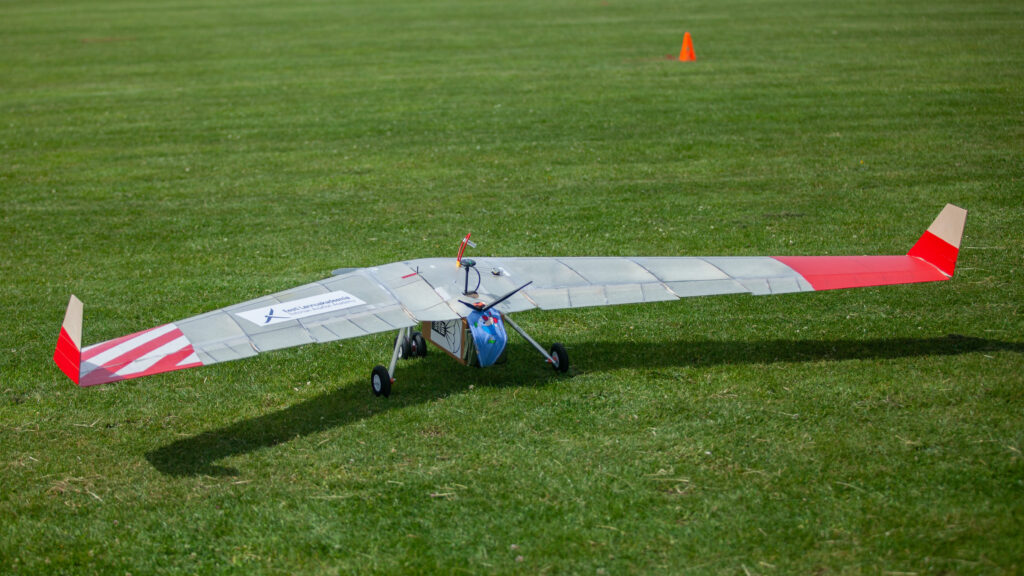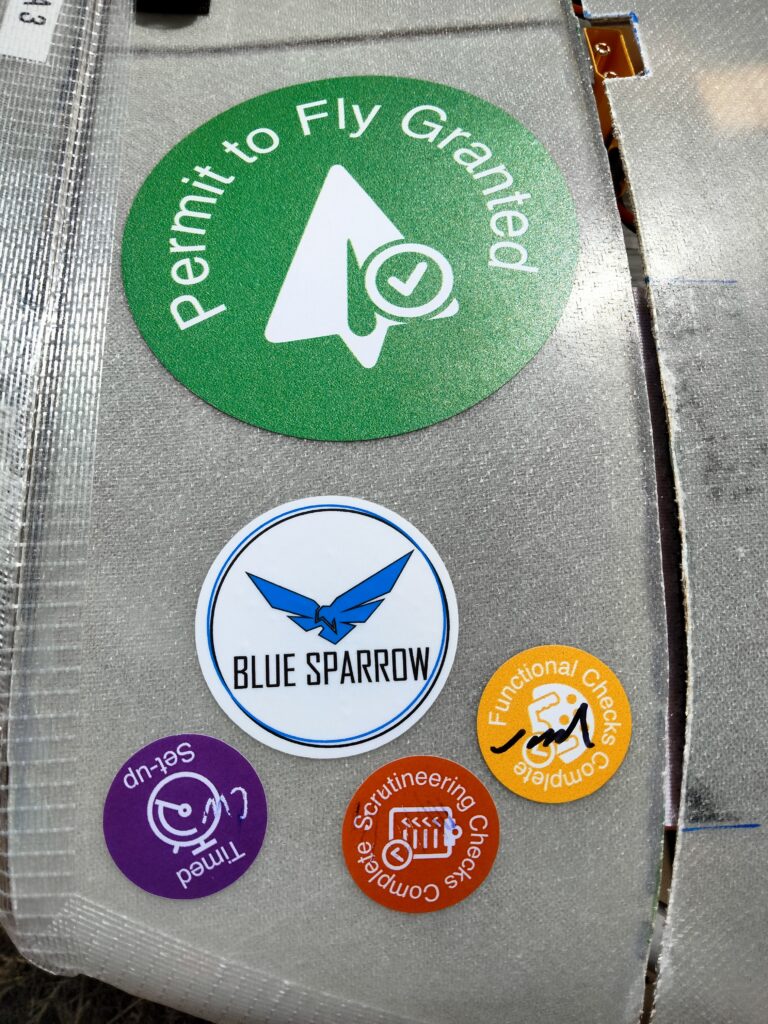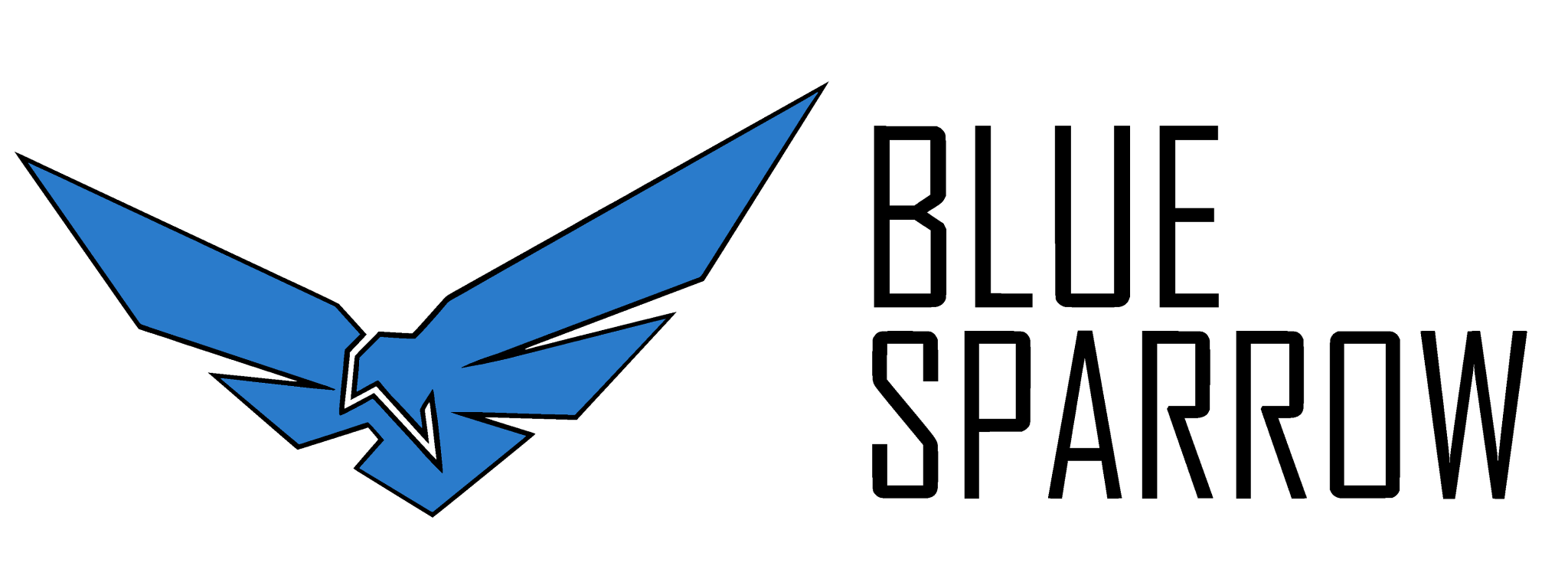The Blue Sparrow team has successfully returned home from the competition, bringing with them two trophies, memorable experiences, and new acquaintances. Five action-packed days in England demonstrated our team’s unity, perseverance, and high motivation while working towards a common goal.

The original flax fiber laminated drone never made it to England, because three days before the competition, during a test flight, the flax drone made an unsuccessful landing and was written off. This unfortunate incident brought together our talented engineers, who spent all three days and nights crafting a new drone. The result was a weatherproof fiberglass laminated drone that went to the competition without a single test flight. We decided on a fiberglass drone because its construction was stronger and the manufacturing process was faster.

The journey began in the early morning hours at Tallinn Airport, from where the flight took us through Amsterdam to Manchester Airport. We traveled with the drone, tools, and other luggage, which unfortunately did not arrive at the destination on the same flight. Our airline had left the luggage behind, and it only arrived on the last flight of the same day. Since time was pressing us, we had to leave the airport by then and participate in safety training at the competition site in Buckminster, which was 2.5 hours away from the airport. At night, our logistics team went to the airport to pick up the drone, and in the morning, we successfully passed the first tests that the judges expected from us with the drone.
On the first day of the competition, we passed all the necessary checks, which confirmed that our drone was airworthy, and we were allowed to take off. For this, our drone passed a mechanical inspection by the scrutineering team, an avionics check, and we had to unpack the drone from the box and prepare it for flight against the clock. The goal was to do as much as possible in one day so that we wouldn’t run out of time. The set goal was achieved; we got to the first flight on the first day as soon as we received the airworthiness certificate.

Due to logistical problems, our drone was the last to physically arrive at the competition site, but the third to take off. We left two flights for the next day, which chronologically got better and better. The last flight brought us the most points. Our drone took off autonomously, passed all the given points autonomously, and released the package better and more accurately than we could have expected. We lost points in landing because we decided to do it manually so that the drone would return home in one piece.
With this score, we won third place overall and also received the airworthiness award, which showed that our drone was easy to assemble and fly. The whole team gained a great deal of experience during these days. New ideas for improving the drone are already written down and waiting to be implemented so that next year, Blue Sparrow will still be represented by a drone made of flax fiber. We learned from the mistakes made this time, and next year we will go to the competition to prove that it is also possible to successfully build a drone from recycled materials. Because one of the cornerstones of Blue Sparrow is and will remain environmental friendliness.
